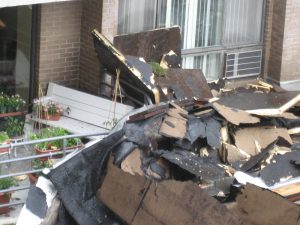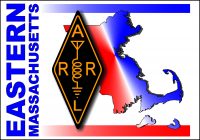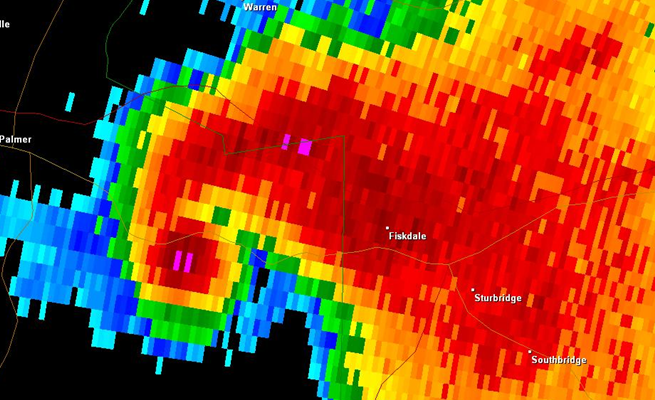Contents
Introduction
 SKYWARN™, a program of the National Weather Service, includes thousands of volunteer storm spotters who serve as a first line of defense against severe weather. Reports from spotters and chasers are given to the National Weather Service so that they have ground truth information to warn the general public. Spotting provides ground information and localized conditions that the National Weather Service might not know the extent or might not otherwise be aware of. They typically report events, such as structures struck by lightning, rotating wall clouds, funnel clouds—or conditions that exceed specific thresholds, such as extremely strong winds, significant hail or very heavy rainfall.
SKYWARN™, a program of the National Weather Service, includes thousands of volunteer storm spotters who serve as a first line of defense against severe weather. Reports from spotters and chasers are given to the National Weather Service so that they have ground truth information to warn the general public. Spotting provides ground information and localized conditions that the National Weather Service might not know the extent or might not otherwise be aware of. They typically report events, such as structures struck by lightning, rotating wall clouds, funnel clouds—or conditions that exceed specific thresholds, such as extremely strong winds, significant hail or very heavy rainfall.
Amateur Radio operators bring to storm spotting additional resources; an established communications system that can function in an emergency, a pool of volunteers willing to be trained, a history of public service, and technologies that no other group has. [ARRL Web, Wikipedia]
SKYWARN in Eastern Massachusetts
The Taunton SKYWARN Amateur Radio Club operates WX1BOX from the offices of the National Weather Service in Norton.

During weather activations, dedicated volunteers (in close physical proximity to National Weather Service forecasters) operate the club station and listen for reports on various VHF and UHF repeater frequencies. In addition, SKYWARN nets are activated on local repeaters and net control stations ask for check-ins and reports. During severe weather, nets can be heard on many local area repeaters, including:
- 145.230 Boston (PL: 88.5 Hz)
- 145.370 Gardner/145.45-Fitchburg/147.39 repeaters via IRLP 9122
- 145.470 Danvers (PL: 136.5 Hz)
- 146.640 Waltham (PL: 136.5 Hz)
- 146.685 Plymouth (PL: 131.8 Hz)
- 146.895 Walpole (PL: 123.0 Hz)
- 146.955 Dennis PL: 88.5 or 147.375 Falmouth PL: 110.9
- 146.955 Westford (PL: 74.4 Hz)
- 146.970 Paxton (PL: 114.8 Hz)
- 147.000 Dartmouth (PL: 67.0 Hz)
- 147.180 Bridgewater (PL: 67.0 Hz)
- 147.225 Whitman (PL: 67.0 Hz)
Reporting Criteria

Reporting should adhere to the following criteria:
- Tornadoes or funnel clouds (be very wary of look-alikes; watch for rotation)
- Wall clouds, especially if they are rotating
- Hail (Be specific with regard to size; DO NOT report MARBLE size)
- Winds (40 mph or greater; specify whether estimated or recorded)
— large branches downed (specify diameter of branch)
— Trees/power lines downed
— Structural damage to buildings (roof, windows, etc.) - Rainfall
— 1 inch or greater in an hour (NOT a 1″/hr. rate for 10 minutes)
— 2 inches or greater storm total - Flooding
— Streams/Rivers — also, when nearing bankful
— Coastal
— Street (road closures/washouts, cars stuck due to flood waters. Minimum of 6″ of water covering an entire roadway or lane of a major route/highway) - Winter Weather
— Precipitation type change (rain to sleet/freezing rain/snow,
when the change has “taken hold”)
— Thunder, when accompanied by snow
— 1/4″ radial ice accretion (from twig outward; not circumference) - New Snowfall
— First 2 inches; every 2-3 inches thereafter
— 1 inch per hour or greater
— If less than 2 inches total, give final total only
— Give final total (don’t leave us hanging with a partial report)
— Report any snow/sleet/freezing rain if not in NWS forecast! - PROCEDURES
1) Advise Amateur Operators to BRIEFLY describe WHAT was observed; and WHEN &
WHERE it was observed.
2) Make sure hail size is noted using proper conventions (e.g., NO Marble Sized Hail).
3) Make sure if winds are estimated they use estimates as taught in
SKYWARN training
Training
A typical SKYWARN training session program covers:
- the basics of thunderstorm development
- fundamentals of storm structure
- identifying potential severe weather features
- learning information to report and how to report it
- basic severe weather safety
Training sessions are held throughout Southern New England in the spring and at the New England ARRL Convention in September. For the latest schedule, see <http://wx1box.org/skywarn-training-schedule-2020/>.
SKYWARN also offers an online YouTube refresher course.


